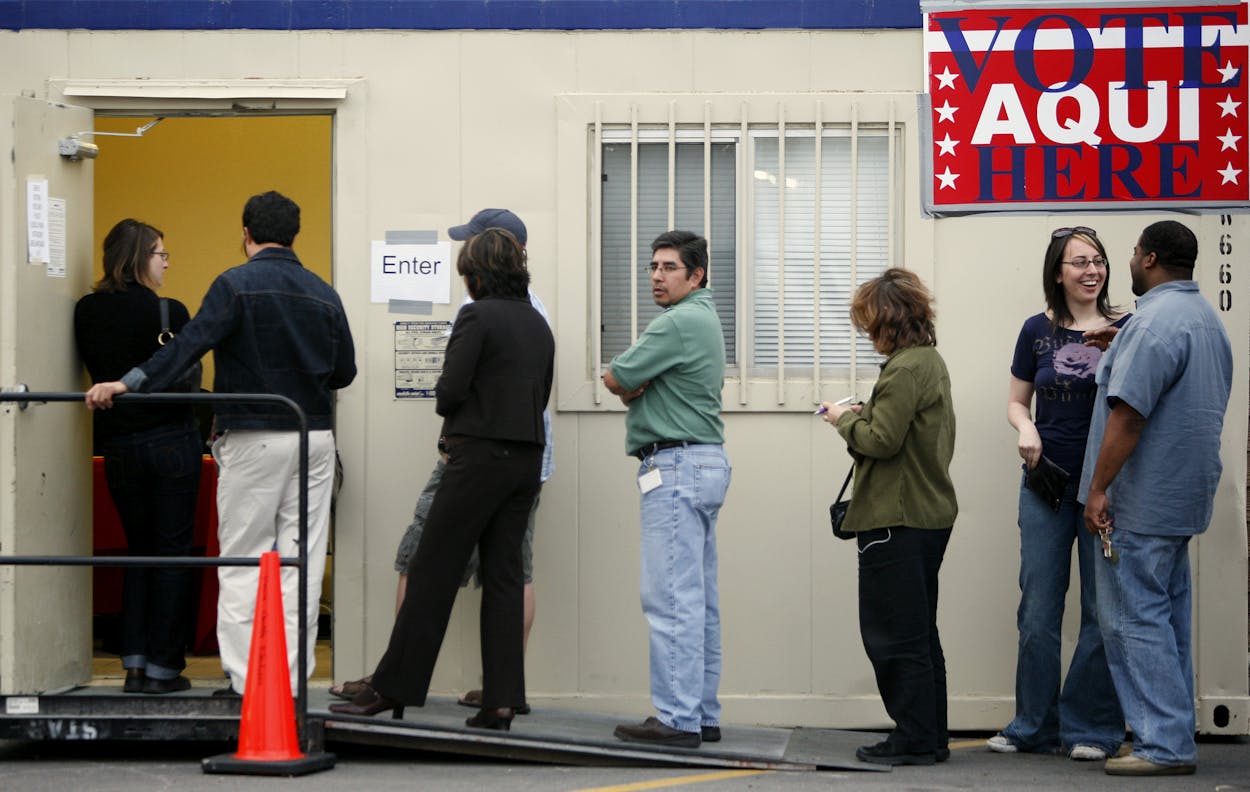Early voting began in Texas on Monday, and the turnout has been massive. First-day voting records have been broken in Travis, Harris, Dallas, Tarrant, Bexar, Hidalgo, and other counties. And the totals aren’t just barely topping past years: in Travis County voter turnout more than doubled 2012 numbers, while in Dallas there was an 80 percent increase over 2012. Harris and Hidalgo Counties saw a 40 percent spike over the last presidential election, Tarrant County had a 30 percent jump, and Bexar County had a more modest 15 percent increase.
But when we’re talking about voter turnout in Texas, the fact that a 15 percent increase feels modest speaks to how unprecedented the 2016 election is. Voter turnout in Texas has long lagged behind much of the U.S., a trend that continued right up until the primary election in March, when we came in forty-second among the states. It’s still very early in the voting process, so it’s hard to read too much into what these numbers mean going forward for the overall turnout. But what we’ve seen thus far indicates that there could be a spike in overall civic engagement in the state.
The increased turnout shouldn’t necessarily be a surprise though. Although a lot has been made of the enthusiasm gap that both presidential candidates face among their parties, at least compared to candidates like Barack Obama and George W. Bush, this election has been the most ubiquitous reality show the nation has ever experienced. Increased interest in an election tends to ultimately result in increased turnout, even if people aren’t as excited about a particular candidate.
Digging further into the numbers, it seems as though the long-whispered awakening of Texas Democrats happened, at the very least, on day one. GOP consultant Derek Ryan, who published a detailed report on the affiliations of Texas’s early voters, examined the voting history of Monday’s voters, and what he found was notable. Of the votes cast, 36.8 percent of them were from people who had previously voted in the Republican primary, while 32.8 percent of them had voted in the Democratic primary. The rest were split between people who had previously voted in general presidential elections but not party primaries (22.3 percent) and those with no election history whatsoever (8.1 percent).
We don’t know how those voters with history in party primaries are inclined to vote in the general election, but the mere fact that the numbers for Republicans and Democrats are only four points away from one another is significant in and of itself. As our own Erica Greider pointed out on Twitter Tuesday afternoon, Republican primary voters outnumbered Democratic primary voters by a whopping 2:1 margin. So on day one of early voting, a whole lot more of the Democrats who voted in the primaries felt the need to rush to the polls than the Republicans did.
There are other things we can glean from the early voting totals. The gender split here is vast: At least 54 percent of voters on Monday were women, while men made up 42.2 percent of the day’s electorate (the other 3.8 percent are unknown). That could be tricky for Trump, as Nate Silver’s imagined women-only electoral map analysis pointed out—Trump’s biggest base of support comes from men, and if men aren’t casting ballots at the same rate as women, he may have a lot of ground to make up.
And ultimately, all of this analysis is moot if the turnout numbers level off by the end of the week. It’s possible that we’re mostly going to see the same people vote in 2016 as we did in 2012. If that’s the case, the 8.1 percent of voters who haven’t previously cast general election ballots will be notable, but probably not significant enough to tilt the election.
All of which is to say that there’s a lot worth watching in the early voting totals coming out of Texas, but it’s way too early to draw any real conclusions. If the numbers we saw on Monday hold through the entire period, though, Texas is going to be very interesting in the 2016 electoral map.








